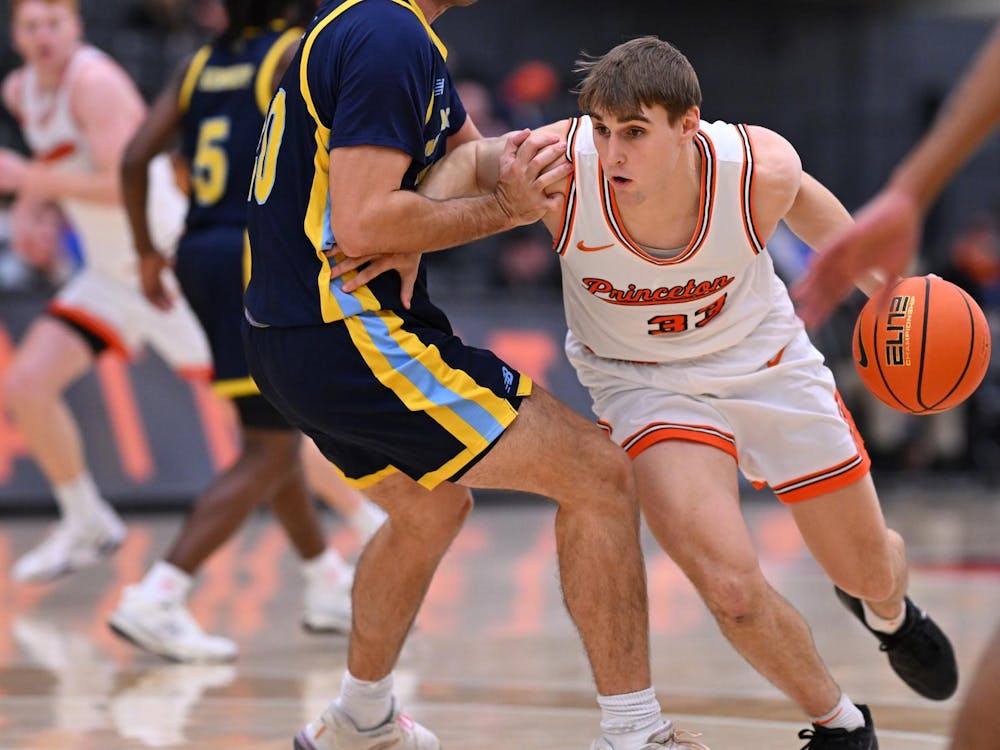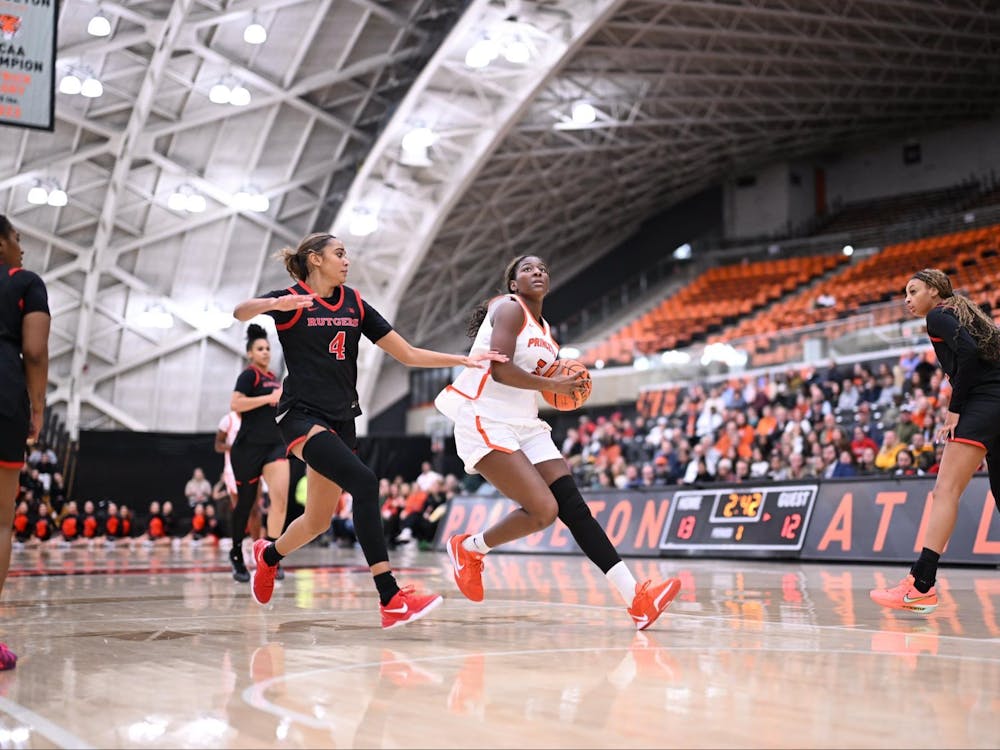In recent years, the University has encouraged newly admitted Princeton students to consider taking a year off before beginning college. This gap-year phenomenon has grown in popularity because it offers the opportunity to travel the world, explore yourself and gain a mature perspective before starting school. Although they do not necessarily participate in traditional gap-year programs, almost every member of the men’s ice hockey team takes a year or two off before starting college.
During this time, athletes play junior hockey and report that they gain many of the same benefits of the classic gap-year. Of the players on the current Tiger roster, all but two played at least one year of juniors. This convention is not unique to Princeton or the Ivy League, but rather is now the standard path for young, male players to take if they have hopes of playing at the NCAA level.
Junior hockey in the United States and Canada encompasses a number of leagues for players aged 16-20 with dreams of playing ice hockey in college or professionally. Before the establishment of juniors in the U.S., similar leagues already existed in Canada and attracted the most talented American players, who knew it would give them a better chance of making the NHL.
Junior leagues were thus created in the U.S. in an attempt to keep the best players within the country to develop their skills before going to school, increasing the level of college ice hockey. Players can begin playing juniors while they are still in high school, though it is increasingly popular to graduate before entering. A player may spend anywhere from one to four years in the juniors, staying until they feel ready to go to college, their coach thinks they have developed sufficiently or a college extends a desirable admissions offer or scholarship.
“The main benefit of playing juniors is physical maturity,” head coach Bob Prier said. “You want to get the most out of your four years because they go by so quickly. You want to be as physically prepared as you can, because it really adds to the level of your game.”
Sophomore forwards Jack Berger and Matt Farris said their junior league experiences were rewarding. After graduating from high school, Berger played with the Des Moines Buccaneers for the 2009-10 season, tallying 15 goals and 13 assists. Berger credits his time in the juniors with helping him develop and prepare for his Princeton hockey career.
“I talked to Princeton at the end of the summer before my senior year of high school, while I was still playing at home,” Berger said. “I verbally committed in the fall of my senior year with the premise that I take a year off and join the Class of 2014. I applied the following year. Some kids will commit as early as junior year of high school, and some not until they are already playing juniors.”
Berger’s team was a member of the United States Hockey League, the top program in the United States. This unpaid, amateur league sends more than two-thirds of its players to Division I programs. Of the current Tigers, 10 played in the USHL, a 16-team league based in the Midwest.

“The USHL and [British Columbia Hockey League] are the two top junior leagues in the United States and Canada,” Prier said. “Most of our guys played in one of those leagues. They have the strongest competition level and the guys really need to prepare for every game. This gets them ready for the transition to college. They need to bring their A-game during every shift on every night.”
Farris played three seasons with the Sioux Falls Stampede, earning 30 goals and 42 assists during his junior career. He received the USHL Scholar-Athlete of the Year award in 2008.
“I started to play juniors in high school,” Farris said. “I was 16 and the baby on the team. There are no prep schools or good high school teams in my area, so going to juniors was different for me than most guys. I was not committed yet when I started.”
Due to its well-established reputation for excellence, the USHL is considered a showcase league. Every year, Des Moines’ Buc Bowl is the largest recruiting opportunity, as almost every Division I team and some professional squads send scouts.

“It is up to [the Office of Admission] when the players are committed,” Prier said. “We start evaluating student-athletes as young as 16 or 17 and start to build relationships with these young players three or four years before they will play for Princeton. There are parameters and guidelines established by the NCAAs and Ivies for contacting the players while they are in juniors, but we definitely build a relationship with them and monitor their development over the years.”
“There is really no redshirting in hockey because of the juniors,” Farris said. “The level of competition and development is high [in the junior leagues], so the players can give big dividends to their college teams right out of the gate. It is our unofficial redshirt program.”
Berger described the USHL as being almost like a professional league, with a schedule of more than 60 games and big rivalries. “The teams are based in towns without pro-sports teams, usually, so it feels semi-professional and it is very popular with the locals,” he said. “There is a lot of intensity, and for the coaches this is their livelihood so they take it very seriously.”
Almost every player in the juniors will leave home to go live near their team when they are drafted. During August, players attend a month-long training camp before embarking on a busy eight-month season. In the USHL, the league covers all the players’ expenses and provides a “billet family” for each player. The billet families who host amateurs have usually done so for several years and are very supportive of the program. Some families host one player and others will take on a few, providing a preview of the college roommate experience.
“My family had two sons and one daughter, and I lived with them for nine months. It was a really cool experience,” Berger said.
“My team was located three hours from home, so I lived with a billet family,” Farris said. “I was definitely treated as one of their kids. My billet mom always wanted me to have my friends over to the house. They had season tickets and would come cheer at my games. They loved hockey so much and enjoyed being around the team.”
“It seems to be rewarding for many of the families, so they keep on doing it,” he added. “I still keep in touch with my family and visit them when I go home for breaks. They are, more or less, my second family.”
Though the players skate once or twice a day and have lift workouts a few times a week, both Berger and Farris emphasized how much free time there is. To fill their days, many players take classes at a local community college, volunteer for community service or get part-time jobs. The teams emphasize not only the on-ice aspect of junior hockey, but the community side as well.
“I audited a class at the local college, which was good,” Berger said. “We had lots of time to just hang with the guys on the team and play video games. It was fun to just focus so much on your sport though; it’s like the pros.”
“In my free time, I volunteered a lot,” Farris said. “It was good because it kept me busy and gave some structure to my days.”
Leaving juniors and beginning freshman year at Princeton provides a new set of demands for the players.
“Adjusting back to school was a little tough, but I was eager to go back to classes,” Berger said. “You aren’t burnt out from high school, which is nice. I was excited to start college.”
“The schoolwork was the hardest to adjust back to,” Farris said. “Some guys do nothing for two years but play hockey. But if they are physically exhausted at the end of the day, at least they are done. Now, throw classes and homework on top of that, and it is tough to adapt and manage your time.”
In general, both Berger and Farris support the juniors program and expressed that they felt it was a neat opportunity. More than just developing their hockey skills, the year away from home provided a cultural experience allowing them to travel around the country and bond with their teammates who were from around the country and the world.
“My time off gave me a new perspective,” Berger said. “I was more excited to come back to school because of it.”
“The program is very centered around hockey, but it gives you something away from hockey, too,” Farris said. “When we enter the juniors, we are expected to act like adults ... get ourselves up in the morning, to practice on time, to our jobs. It made me grow up.”







